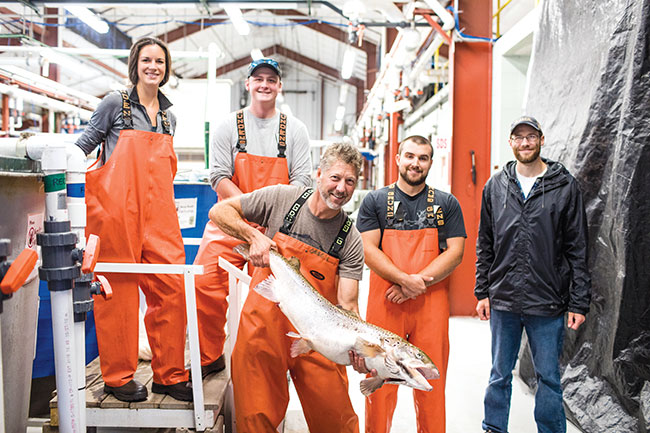
Breeding tomorrow’s aquaculture workforce
May 6, 2020
By Matt Jones
Brought to you by University of Wisconsin-Stevens Point
 University of Wisconsin-Stevens Point’s Northern Aquaculture Demonstration Facility carries out industry research while providing valuable training and educational opportunities for students Credit: Narayan Mahon
University of Wisconsin-Stevens Point’s Northern Aquaculture Demonstration Facility carries out industry research while providing valuable training and educational opportunities for students Credit: Narayan Mahon The Northern Aquaculture Demonstration Facility at the University of Wisconsin-Stevens Point serves as both a center for research and a training facility for the next generation of workers in the sector. Located on land leased by the Red Cliff Band of Lake Superior Chippewa, the facility is a valuable resource to the industry in the region and around the world, and to potential industry employees.
“The mission of the facility is to grow aquaculture in the northern climate and to educate people about aquaculture in the Midwest area,” says assistant director and research program manager, Greg Fischer.
The facility houses a wide variety of aquaculture systems, including indoor semi-commercial recirculating systems with over 10,000 gallons of water in tanks of various sizes. Flow-through cold and heated water capability allows for wide variability in the species that they can grow. Outside of the facility are four half-acre drainable clay ponds and raceways with flow-through cold water. There are experimental tank rearing areas where precise controls over environment, lighting, temperature, turbidity and tank colour can be employed. This multifaceted system has allowed them to raise Atlantic salmon, walleye, lake sturgeon, lake trout, rainbow trout, brook trout, arctic char, and bait fish species such as fat head minnow.
The facility competes for grants for research projects. However, it also works with private groups interested in specific research and most of these research eventually become public.
Fischer touts the facility’s strong outreach program. They work with schools around the state to attract students who may be interested in pursuing a minor in aquaculture and aquaponics. A regular major program is in the works.
One of the biggest benefits of the facility for students is that the system grows fish at commercial densities, which means their experience is more easily transferable to the workplace. Graduates are often hired to work as technicians at the facility until an appropriate job placement can be found.
“People that work here get that experience, whether it’s a workshop or training or they’re working here as a technician or an intern. It’s really vital, I think, for the industry that they get that training,” says Fischer.
Advertisement
- Antibiotic use in fish farms poses threat to humans, study says
- New dates set for Boston seafood show





